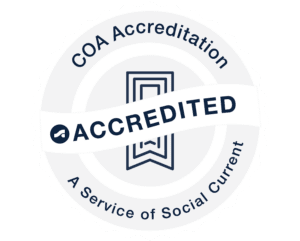NON-OPIOID ALTERNATIVES FOR THE TREATMENT OF PAIN
A guide to working with your healthcare practitioner to manage pain
Prescription opioids are sometimes used to treat moderate-to-severe pain. Because prescription opioids have a number of serious side effects, it is important for you to ask questions and learn more about the benefits and risks of opioids. Make sure you’re getting care that is safe, effective, and right for you.
The following information is about nonopioid alternative treatments to manage pain. You and your healthcare practitioner can develop a course of treatment that uses multiple methods and modalities, including prescription medications such as opioids, and discuss the advantages and disadvantages of each approach.
Pain management requires attention to biological, psychological, and environmental factors. Before deciding with your healthcare practitioner about how to treat your pain, you should consider options so that your treatment provides the greatest benefit with the lowest risk.
Cold and heat. Cold can be useful soon after an injury to relieve pain, decrease inflammation and muscle spasms, and help speed recovery. Heat raises your pain threshold and relaxes muscles.
Exercise. Staying physically active, despite some pain, can play a helpful role for people with some of the more common pain conditions, including low back pain, arthritis, and fibromyalgia.
Weight loss. Many painful health conditions are worsened by excess weight. It makes sense, then, that losing weight can help to relieve some kinds of pain.
Diet and nutrition. Chronic pain may be the result of chronic inflammation. Some foods can increase inflammation and contribute to pain levels. Reducing or eliminating foods that increase inflammation may provide pain relief.
Yoga and tai chi. These mind-body and exercise practices incorporate breath control, meditation, and movements to stretch and strengthen muscles. They may help with chronic pain conditions such as fibromyalgia, low back pain, arthritis, or headaches.
Transcutaneous electrical nerve stimulation (TENS). This technique employs a very mild electrical current to block pain signals going from the body to the brain.
Over-the-counter medications. Pain relievers that you can buy without a prescription, such as acetaminophen (Tylenol) or nonsteroidal anti-inflammatory drugs (NSAIDs) like aspirin, ibuprofen (Advil, Motrin), and naproxen (Aleve, Naprosyn) can help to relieve mild to moderate pain.
TREATMENTS PROVIDED BY LICENSED HEALTHCARE PROVIDERS
Physical therapy (PT) and occupational therapy (OT). PT helps to increase flexibility and range of motion which can provide pain relief. PT can also restore or maintain your ability to move and walk. OT helps improve your ability to perform activities of daily living, such as dressing, bathing, and eating.
Massage therapy. Therapeutic massage may relieve pain by relaxing painful muscles, tendons, and joints; relieving stress and anxiety; and possibly impeding pain messages to and from the brain.
Acupuncture. Acupuncture is based on traditional Chinese medical concepts and modern medical techniques and provides pain relief with no side-effects by stimulating the body’s pain-relieving endorphins. Techniques may include inserting extremely fine needles into the skin at specific points on the body.
Chiropractic care. Chiropractic physicians treat and rehabilitate pain, diseases and conditions using manual, mechanical, electrical, natural methods, physical therapy, nutrition and acupuncture. Chiropractors practice a hands-on, prescription drug-free approach to health care that includes patient examination, diagnosis and treatment.
Osteopathic Manipulative Treatment (OMT). Osteopathic physicians (DO) are educated, trained, and licensed physicians, but also receive additional training in OMT. OMT is a set of hands-on techniques used by osteopathic physicians to diagnose, treat, and prevent illness or injury. OMT is often used to treat pain but can also be used to promote healing, increase overall mobility, and treat other health problems.
Behavioral interventions. Mental health professionals can offer many avenues for pain relief and management. For example, they can help you reframe negative thinking patterns about your pain that may be interfering with your ability to function well in life, work, and relationships. Behavioral interventions can allow you to better manage your pain by changing behavior patterns.
Topical treatments and medications. Topical Agents, including Anesthetics, NSAIDs, Muscle Relaxers, and Neuropathic Agents, can be applied directly to the affected areas to provide needed pain relief and typically have a minimal risk of side effects due to low absorption of the medication into the blood stream. Compounded topicals prepared by a pharmacist can be customized to the patient’s specific needs.
Interventional pain management. “Interventional” procedures might include an injection of an anesthetic medicine or steroid around nerves, tendons, joints or muscles; spinal cord stimulation; insertion of a drug delivery system; or a procedure to stop a nerve from working for a long period of time.
Non-opioid anesthesia. Non-opioid anesthesia refers to the anesthetic technique of using medications to provide anesthesia and post-operative pain relief in a way that does not require opioids. Anesthetists can replace opioids with other medications selected for their ability to block surgical and post-surgical pain. By replacing opioids and incorporating the variety of anesthetic and analgesic medications that block the process of pain, anesthesia providers can provide a safer anesthetic that avoids the adverse effects of opioids.
Discuss these alternatives with your healthcare practitioner and talk about the advantages and disadvantages of the specific options being considered. Different approaches work better on different types of pain. Some treatments for pain can have undesirable side effects while others may provide benefits beyond pain relief. Depending on your insurance coverage, some options may not be covered, resulting in substantial out-of-pocket costs. Other options may require a significant time commitment due to the number of treatments or the time required for thetreatment. Good communication between you and your healthcare practitioner is essential in building the best pain management plan for you.
HELPFUL HINTS AND LINKS
When you are selecting a healthcare practitioner, you can verify their license and find more information at: https://appsmqa.doh.state.fl.us/MQASearchServices/Home
You can find more information at these links.
National Institutes of Health: https://nccih.nih.gov/health/pain/chronic.htm
Centers for Disease Control and Prevention: https://www.cdc.gov/drugoverdose/pdf/nonopioid_treatments-a.pdf
The above information was reproduced from the nonopioid pain treatment educational pamphlet by the Florida Department of Health. The pamphlet can be viewed here.
House Bill 451, Nonopioid Alternatives, was approved by Governor DeSantis and is effective July 1, 2019. The bill requires that before providing anesthesia or prescribing, ordering, dispensing, or administering an opioid listed as a Schedule II controlled substance to treat pain, the patient must be informed about available nonopioid alternatives. A healthcare practitioner will discuss the advantages and disadvantages of using nonopioid alternatives. Under the new law, the Florida Department of Health is required to develop an educational pamphlet about using nonopioid alternatives and post the pamphlet on the Florida Department of Health’s website. Healthcare practitioners must provide the patient with this educational pamphlet. Those healthcare practitioners providing emergency services and care are exempt from these requirements. To view the entire House Bill 451 click here.






